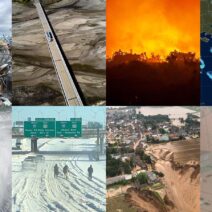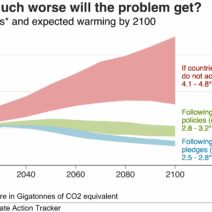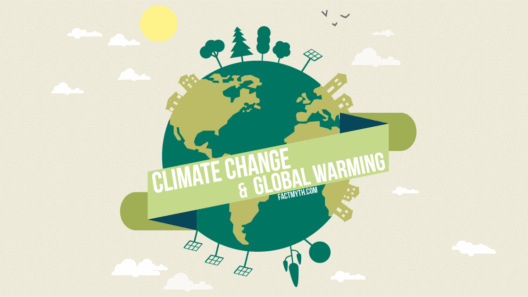Global warming is akin to an unseen symphony, playing in the background of our lives, orchestrating transformations across the globe. The climate is changing, but most of us may not even notice the nuances of this shifting melody until its consequences become impossible to ignore. This phenomenon, often described as the gradual increase in the Earth’s average surface temperature, arises primarily from human activities, particularly the combustion of fossil fuels and deforestation. Each additional note in this symphony contributes to a crescendo that impacts every aspect of our existence.
To understand global warming, we must first explore the greenhouse effect, the fundamental mechanism driving this warming trend. Visualize the Earth as a cozy greenhouse, with a protective layer of gases surrounding it. These gases—carbon dioxide, methane, and nitrous oxide—trap heat from the sun, preventing it from escaping back into space. However, the balance within this greenhouse is delicate. When humans release excess greenhouse gases into the atmosphere, we amplify this effect, akin to turning up the thermostat until the greenhouse becomes unbearable. This results in catastrophic changes to our climate, affecting ecosystems, weather patterns, and sea levels.
The consequences of global warming manifest in a variety of alarming ways. One prominent symptom is the increase in extreme weather events. Imagine the planet as a cauldron, with boiling temperatures causing storms, hurricanes, and droughts to bubble over. As the climate warms, the intensity and frequency of these events escalate, leading to devastating consequences for communities worldwide. Regions that were once temperate are now experiencing unprecedented heat waves, while others face floods of biblical proportions. These shifts not only cause immediate destruction but also disrupt livelihoods and displace populations, leading to a humanitarian crisis that transcends borders.
Another harbinger of global warming is the gradual melting of polar ice caps. Picture these majestic glaciers as ancient sentinels, holding the secrets of our planet’s history. As temperatures rise, these giants retreat, shedding icebergs that drift into the ocean like discarded dreams. This melting contributes to rising sea levels, threatening coastal cities with inundation. The delicate ecosystems that thrive in these frigid environments are also at risk, as polar bears and other wildlife struggle to adapt to their rapidly changing habitat.
Moreover, global warming poses a significant threat to biodiversity. Each species represents a unique brushstroke on the vibrant canvas of life, contributing to the intricate web of ecosystems that sustain us. However, as temperatures rise and habitats alter, many species struggle to survive. Some may migrate to cooler areas, while others face extinction. This loss of biodiversity diminishes resilience in ecosystems, making them more vulnerable to diseases and pestilences that can further destabilize our food systems and economy.
The human factor in global warming cannot be overstated. Industrialization, urbanization, and unsustainable agricultural practices have all played a role in exacerbating this crisis. Picture society as a thriving garden, teeming with life. However, daily activities such as driving gas-powered cars, utilizing fossil fuel-based energy, and overconsuming resources cultivate weeds that choke the garden’s potential. Transformation of our lifestyles is imperative if we are to combat this unseen force reshaping our world.
Generating awareness and understanding is the first step toward action. Engaging in discussions about greenhouse gas emissions, carbon footprints, and renewable energy sources can galvanize communities into collective action. Initiatives such as reforestation, conservation, and the transition to clean energy sources represent the seedlings of hope in our quest to restore balance to our ecosystems. Moreover, sustainable practices—from reducing waste to embracing a vegan diet—can lower the emissions that are hastening global warming.
Education is another powerful tool. By informing the younger generations about climate change, we equip them to become stewards of the planet. Schools can advocate for sustainability programs, emphasizing the importance of environmental science within the curriculum. Such programs nurture a sense of responsibility and stewardship in students, empowering them to advocate for policies that combat climate change and innovate solutions to tomorrow’s environmental challenges.
Furthermore, governments play a crucial role in combating global warming. Climate policies, agreements, and regulations must be enacted to put an end to harmful practices. The Paris Agreement, for instance, is a vital pact that aims to limit global temperature rise to well below two degrees Celsius above pre-industrial levels. Elevated international cooperation is paramount. Countries must transcend political borders and collaborate on a shared vision to secure a sustainable future.
As we grapple with the specter of global warming, it is essential to maintain hope and resilience. The momentum for change is building, with countless individuals and organizations actively working to mitigate greenhouse gas emissions and adapt to the changes already in motion. Initiatives to harness wind, solar, and geothermal energy are proof that humanity can pivot towards sustainability if guided by innovation and determination.
In summary, global warming is an insidious force reshaping our world with far-reaching implications. Through collective awareness, unwavering commitment to sustainability, and informed policy-making, it is possible to counteract this crisis. The transformation we seek begins with individuals willing to make changes that ripple outward like waves in the ocean, creating a meaningful impact on the planet. As we strive for a harmonious balance, remember that every action counts. In unity, the cadence of change can become a powerful anthem for our future.








